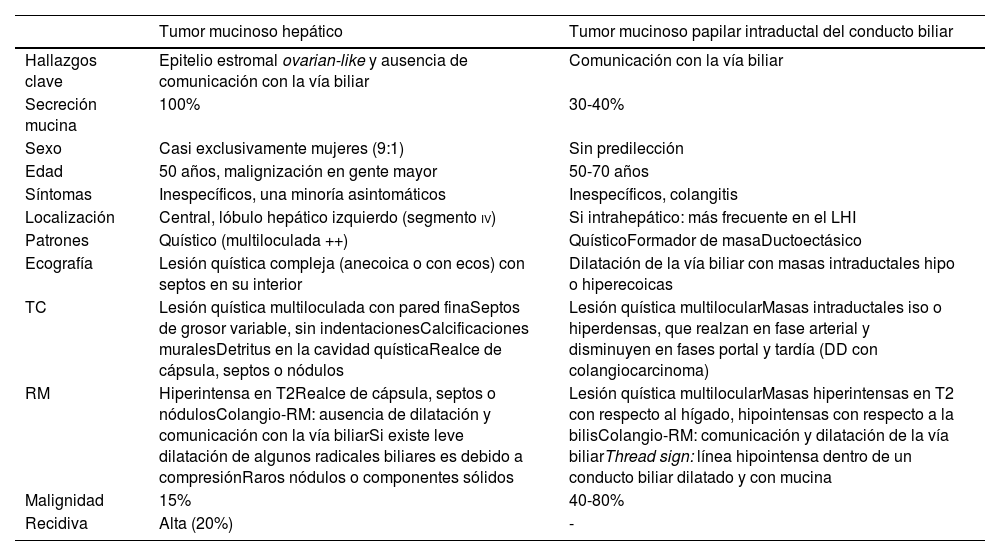Las neoplasias quísticas hepatobiliares productoras de mucina son neoplasias poco frecuentes que incluyen el tumor mucinoso hepático y el tumor papilar mucinoso intraductal del conducto biliar.
Los tumores mucinosos hepáticos se caracterizan por la presencia de epitelio estromal ovarian-like, y son neoplasias comúnmente benignas. Se presentan como masas grandes quísticas, multiloculadas, sin comunicación con la vía biliar, y son más frecuentes en mujeres de mediana edad.
El tumor papilar mucinoso intraductal del conducto biliar es una lesión premaligna, con origen en la vía biliar y que presenta comunicación con la misma, con 3 patrones posibles de crecimiento: quístico, ductoectásico o formador de masa. Se presenta en torno a los 50-70 años, sin predilección por género. Presentan una alta probabilidad de malignización, por lo que la resección segmentaria hepática es el tratamiento de elección.
Ambas entidades presentan características superpuestas y otras distintivas, siendo importante que el radiólogo conozca y distinga cada una de ellas, ya que presentan pronóstico y manejo diferente.
Mucin-producing cystic hepatobiliary neoplasms are rare neoplasms which include mucinous cystic neoplasms of the liver and intraductal papillary mucinous neoplasms of the bile duct.
Mucinous cystic neoplasms of the liver are characterised by the presence of ovarian-like stroma, and are usually benign. They present as large, multiloculated, cystic masses without biliary communication and are more common among middle-aged women.
Intraductal papillary mucinous neoplasms of the bile duct are premalignant lesions originating in the bile duct and presenting with biliary communication. There are 3 growth patterns: cystic, duct-ectatic and mass-forming. They tend to appear between the ages of 50 and 70, with no gender predilection. There is a high probability of malignancy, so segment-oriented hepatic resection is the treatment of choice.
Both entities have overlapping and distinctive features, and it is important for the radiologist to be aware of these and be able to distinguish between them, as they have different prognoses and require different management approaches.
Artículo
Comprando el artículo el PDF del mismo podrá ser descargado
Precio 19,34 €
Comprar ahora




















